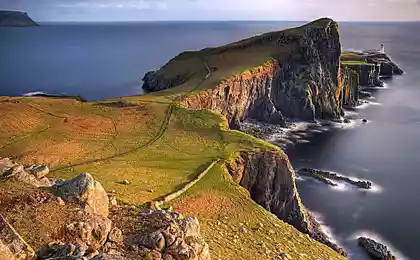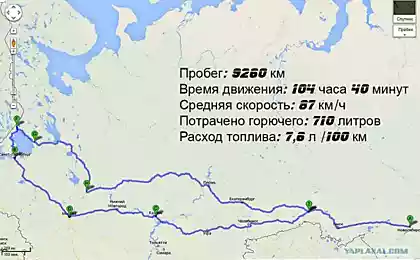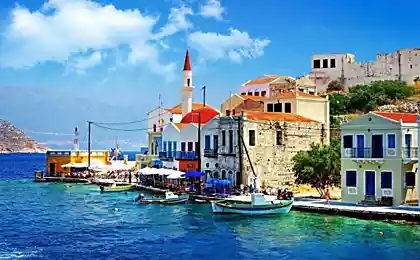761
10 places that must be visited, as long as they have not disappeared
Media so often tell us about the climate and the Earth's landscape associated with the life of humanity, that we have ceased to attach great importance to this. Global warming - talking about it for decades, but we did not feel improvement of the world's oceans as a far away from us, and is not perceived as a threat
. Meanwhile, there are a large number of beautiful corners of our planet, to which these changes have a profound and devastating impact
Website has compiled a list of places -. Ornaments of our planet, which we are in danger of losing because of global warming , industry influence or great tourist activity.
Taj Mahal, Delhi, India
According to many scientists, this beautiful snow-white mausoleum once there are not more than 5 years. Several reasons for this: the pollution of the river Yamuna, which washes the foundation of the Taj Mahal, has led to the fact that the foundation beams have begun to rot, and the endless tourists harm the marble floor and walls of buildings
. According to UNESCO, the mausoleum of the request may be closed to the public in a short time.
Glaciers of Antarctica
After analyzing images from NASA satellites, scientists have concluded that the rate of melting of glaciers in Antarctica over the past 10 years has become simply catastrophic. Since 2003 the ice has become thinner in some areas almost a meter, and on-site ice slopes today you can see the hills. The situation is aggravated meltwater, which is eroding, glaciers are destroying faster than warming.
In order to somehow reduce the impact on the environment, in the region of Antarctica have reduced the number of cruises, and them in the near future plan to ban completely.
Pool Yangtze River, China
The construction of a giant dam, shipping, industrial and agricultural waste, deforestation - all this leads to the destruction of the flora and fauna of the Yangtze River
. Chinese sturgeon, finless porpoise, Chinese alligator - all of these rare species of animals that live in the Yangtze, are on the verge of extinction
Maldives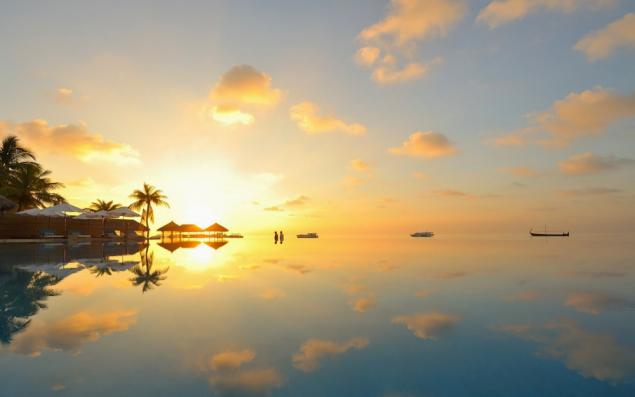
1,190 islands and atolls of the Maldives archipelago are completely at sea level (the highest point of the island - 2, 4 meters). Due to the melting of glaciers the water level in the oceans rises, and it threatens the complete flooding of Maldives.
State authorities are preparing for flooding by buying land and houses to their fellow citizens on the continent (mainly in India).
Great Barrier Reef
Increasing acidity of the water, a large number of tourists, warming - all these factors lead to the destruction of the Great Barrier Reef. But most of all the situation worsen tropical storms and starfish, which feed on coral polyps. From 1985 to 2013, killed more than 50% of the total body, and only a quarter can stay another 10 years.
How to deal with hurricanes and warming on a global scale, scientists still do not understand, but to conduct biological control and reduce them by virtue of the population of starfish.
Dead Sea
< br>
Since 1970, the water level in the Dead Sea fell by 30 meters. The reason for this - first of all mining operations on the territory of the sea and the use of 80% of the tributaries flowing into the sea
. The sea disappears, leaving emerging areas of land sinkholes, which negatively affect the ecosystem of the coastal area.
In order to save the Dead Sea Canal from the Red Sea planed to it, but in this case, the composition of the water and the old view of the salt pond will never be as before.
Galapagos Islands
Galapagos - his home for nearly 10,000 rare species of animals, it is a visit to this archipelago inspired Charles Darwin's work on the theory of evolution
. Unfortunately, the endless stream of tourists, poachers, running along the island cruise ships has led to the fact that the ecosystem of the islands is in poor condition and at risk of extinction, many representatives of flora and fauna.
National Park "Everglades", Florida, USA
Reservoirs of this beautiful US fleet in whose territory inhabited by dozens of rare species of animals, dry, because the water is pumped out of them for the surrounding farms and cities.
Swamps, which occupy a large area of the park, contaminated waste, and ecosystem collapses.
Since 1900, the park area was halved, and on the verge of extinction are animals such as the Florida panther ( "Everglades" - the only habitat of this species), turtles, manatees
River Angara. Russia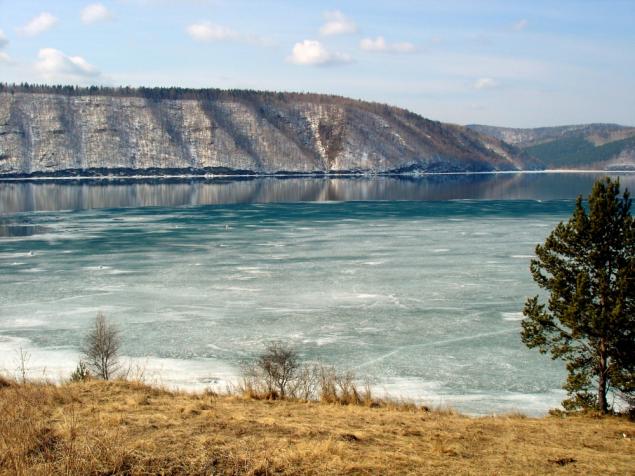
Once the pure river of the world may disappear from the face of the Earth, becoming a long chain of dirty water reservoirs filled with mineral oil emissions, mercury and copper compounds. In some areas right now it is not recommended to eat fish caught in the river.
Due to the bad environment in the area of the Angara on the verge of extinction are sturgeon, sturgeon, trout, as well as unique Angara pine - the pride of Siberia
Venice, Italy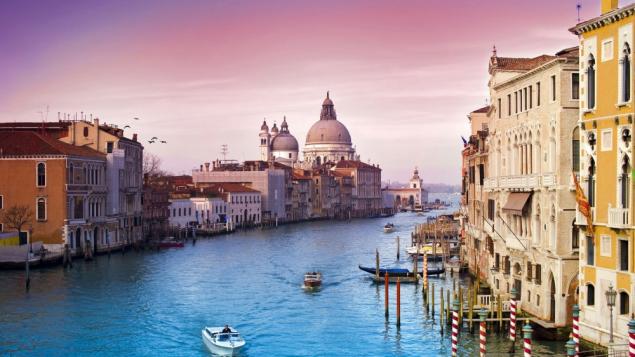
<. br>
Venice is sinking - the water level rises by 1 millimeter a year, and by 2100 the city could disappear completely. Fuel to the fire adds a large number of visitors: 60 000 per day instead of the norm, which can withstand the ancient city in 30 000 Waves cruise liners also harmful to Venezia - they erode the foundation
. One of the most beautiful cities on the planet trying to save - have banned the entry of cruise liners in the central part of the plan to impose restrictions on the number of tourists, but the sea, which once gave Venice's wealth and prosperity continues to destroy its
. It's sad that all these places in a few decades, our descendants will be able to see only colorful pictures on the net. Saving the planet on a global scale, of course, the case of special organizations, professionals and entire nations, but the Website says that to make a small contribution to the common cause and everyone can, for example, remains a cultural tourist while traveling to historic sites , outings, as well as the reasonable use of natural resources.
According to the materials: Antarktis, Telegraf, Scientificrussia
Preview: terrenaminar
via www.terrenaminar.com/destinos.html
. Meanwhile, there are a large number of beautiful corners of our planet, to which these changes have a profound and devastating impact
Website has compiled a list of places -. Ornaments of our planet, which we are in danger of losing because of global warming , industry influence or great tourist activity.
Taj Mahal, Delhi, India

According to many scientists, this beautiful snow-white mausoleum once there are not more than 5 years. Several reasons for this: the pollution of the river Yamuna, which washes the foundation of the Taj Mahal, has led to the fact that the foundation beams have begun to rot, and the endless tourists harm the marble floor and walls of buildings
. According to UNESCO, the mausoleum of the request may be closed to the public in a short time.
Glaciers of Antarctica

After analyzing images from NASA satellites, scientists have concluded that the rate of melting of glaciers in Antarctica over the past 10 years has become simply catastrophic. Since 2003 the ice has become thinner in some areas almost a meter, and on-site ice slopes today you can see the hills. The situation is aggravated meltwater, which is eroding, glaciers are destroying faster than warming.
In order to somehow reduce the impact on the environment, in the region of Antarctica have reduced the number of cruises, and them in the near future plan to ban completely.
Pool Yangtze River, China

The construction of a giant dam, shipping, industrial and agricultural waste, deforestation - all this leads to the destruction of the flora and fauna of the Yangtze River
. Chinese sturgeon, finless porpoise, Chinese alligator - all of these rare species of animals that live in the Yangtze, are on the verge of extinction
Maldives

1,190 islands and atolls of the Maldives archipelago are completely at sea level (the highest point of the island - 2, 4 meters). Due to the melting of glaciers the water level in the oceans rises, and it threatens the complete flooding of Maldives.
State authorities are preparing for flooding by buying land and houses to their fellow citizens on the continent (mainly in India).
Great Barrier Reef

Increasing acidity of the water, a large number of tourists, warming - all these factors lead to the destruction of the Great Barrier Reef. But most of all the situation worsen tropical storms and starfish, which feed on coral polyps. From 1985 to 2013, killed more than 50% of the total body, and only a quarter can stay another 10 years.
How to deal with hurricanes and warming on a global scale, scientists still do not understand, but to conduct biological control and reduce them by virtue of the population of starfish.
Dead Sea

< br>
Since 1970, the water level in the Dead Sea fell by 30 meters. The reason for this - first of all mining operations on the territory of the sea and the use of 80% of the tributaries flowing into the sea
. The sea disappears, leaving emerging areas of land sinkholes, which negatively affect the ecosystem of the coastal area.
In order to save the Dead Sea Canal from the Red Sea planed to it, but in this case, the composition of the water and the old view of the salt pond will never be as before.
Galapagos Islands

Galapagos - his home for nearly 10,000 rare species of animals, it is a visit to this archipelago inspired Charles Darwin's work on the theory of evolution
. Unfortunately, the endless stream of tourists, poachers, running along the island cruise ships has led to the fact that the ecosystem of the islands is in poor condition and at risk of extinction, many representatives of flora and fauna.
National Park "Everglades", Florida, USA

Reservoirs of this beautiful US fleet in whose territory inhabited by dozens of rare species of animals, dry, because the water is pumped out of them for the surrounding farms and cities.
Swamps, which occupy a large area of the park, contaminated waste, and ecosystem collapses.
Since 1900, the park area was halved, and on the verge of extinction are animals such as the Florida panther ( "Everglades" - the only habitat of this species), turtles, manatees
River Angara. Russia

Once the pure river of the world may disappear from the face of the Earth, becoming a long chain of dirty water reservoirs filled with mineral oil emissions, mercury and copper compounds. In some areas right now it is not recommended to eat fish caught in the river.
Due to the bad environment in the area of the Angara on the verge of extinction are sturgeon, sturgeon, trout, as well as unique Angara pine - the pride of Siberia
Venice, Italy

<. br>
Venice is sinking - the water level rises by 1 millimeter a year, and by 2100 the city could disappear completely. Fuel to the fire adds a large number of visitors: 60 000 per day instead of the norm, which can withstand the ancient city in 30 000 Waves cruise liners also harmful to Venezia - they erode the foundation
. One of the most beautiful cities on the planet trying to save - have banned the entry of cruise liners in the central part of the plan to impose restrictions on the number of tourists, but the sea, which once gave Venice's wealth and prosperity continues to destroy its
. It's sad that all these places in a few decades, our descendants will be able to see only colorful pictures on the net. Saving the planet on a global scale, of course, the case of special organizations, professionals and entire nations, but the Website says that to make a small contribution to the common cause and everyone can, for example, remains a cultural tourist while traveling to historic sites , outings, as well as the reasonable use of natural resources.
According to the materials: Antarktis, Telegraf, Scientificrussia
Preview: terrenaminar
via www.terrenaminar.com/destinos.html
2 puzzles from Google interview, over which even geniuses have to work hard
15 cards for those who so longed for spring












